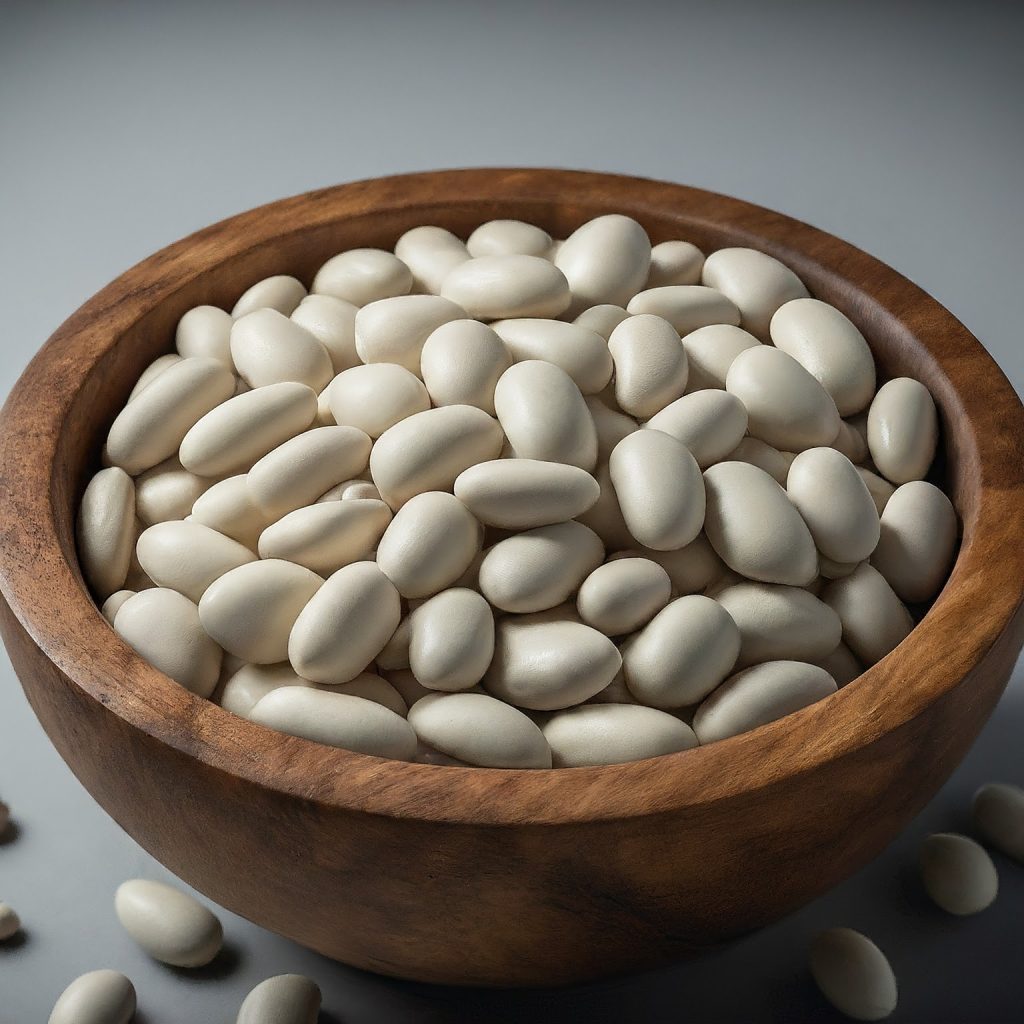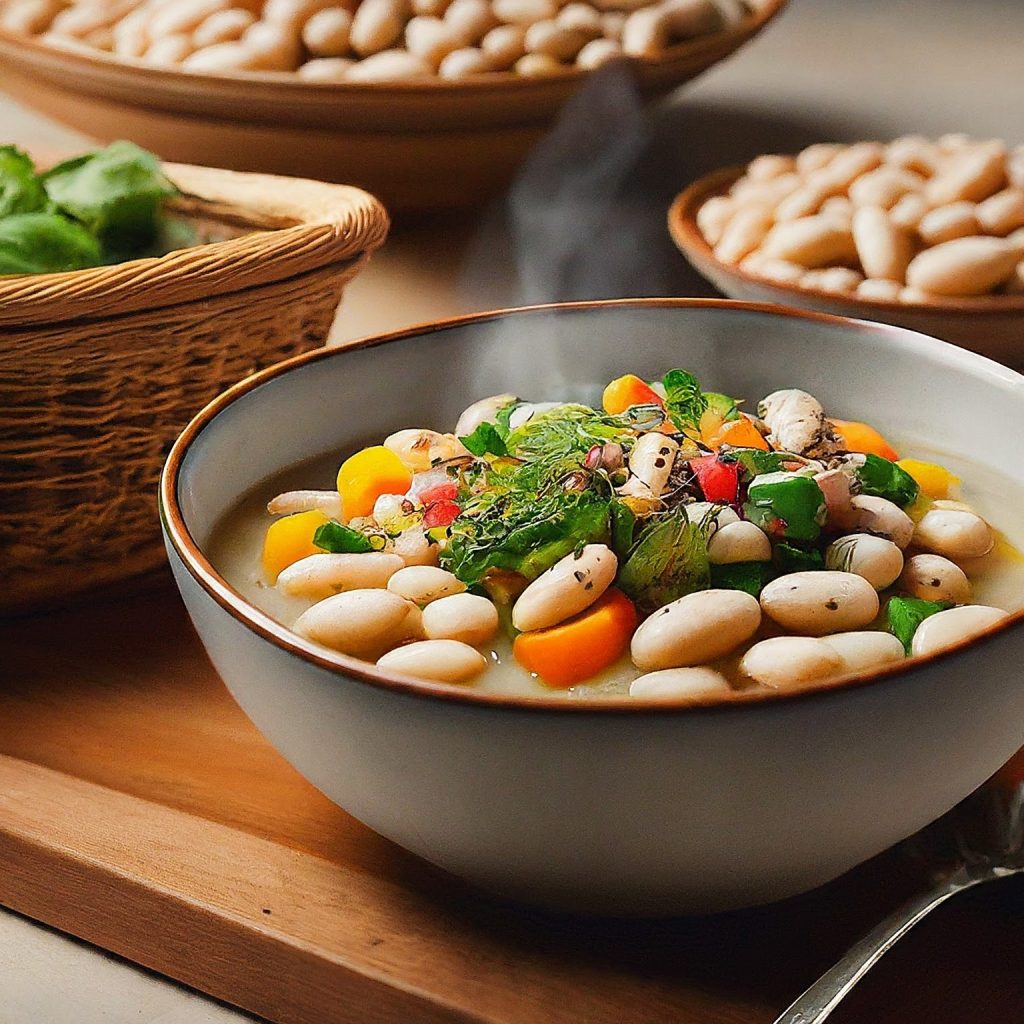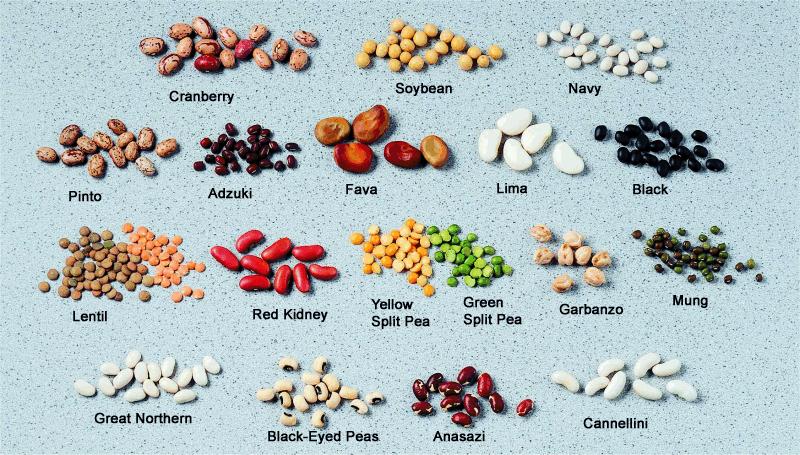Exploring the Versatility and Health Benefits of White Beans
White beans, often overshadowed by their colorful counterparts, are a true gem in the realm of nutrition and culinary versatility. These small, creamy legumes pack a punch not only in taste but also in nutritional value. From soups to salads, dips to mains, white beans offer a canvas for culinary creativity while providing a plethora of health benefits.
Nutritional Powerhouse:
White beans are a rich source of plant-based protein, making them an excellent choice for vegetarians and vegans looking to meet their protein needs. They are also loaded with fiber, aiding digestion and promoting a feeling of fullness, which can be beneficial for weight management.
Moreover, white beans boast an impressive array of vitamins and minerals, including folate, potassium, magnesium, and iron. Folate is essential for cell division and DNA synthesis, making it particularly important for pregnant women. Potassium and magnesium contribute to heart health by regulating blood pressure, while iron helps prevent anemia and supports oxygen transport throughout the body.
Versatile Culinary Ingredient:
One of the greatest appeals of white beans is their versatility in the kitchen. They can be incorporated into a wide range of dishes, adding both texture and flavor. Here are some delicious ways to enjoy white beans:
- White Bean Soup: Create a comforting and nutritious soup by blending cooked white beans with vegetable broth, garlic, onions, and your favorite herbs and spices. Garnish with a drizzle of olive oil and freshly chopped parsley for a burst of freshness.
- White Bean Salad: Combine cooked white beans with cherry tomatoes, cucumber, red onion, and feta cheese for a refreshing salad packed with protein and fiber. Dress with a simple vinaigrette made with olive oil, lemon juice, and herbs.
- White Bean Dip: Whip up a creamy white bean dip by blending cooked white beans with tahini, lemon juice, garlic, and olive oil until smooth. Serve with fresh vegetables and whole-grain crackers for a nutritious snack or appetizer.
- White Bean Stew: Simmer white beans with diced tomatoes, carrots, celery, and kale in vegetable broth for a hearty and satisfying stew. Season with Italian herbs and spices for an extra burst of flavor.
Health Benefits:
In addition to their nutritional content, white beans offer a myriad of health benefits. Their high fiber content helps regulate blood sugar levels and promote digestive health. Furthermore, the combination of protein and fiber can help keep you feeling full and satisfied, making white beans a valuable ally in weight management.
The antioxidants found in white beans, such as flavonoids and polyphenols, help protect cells from damage caused by free radicals, reducing the risk of chronic diseases like heart disease and cancer. Additionally, the potassium content of white beans supports heart health by helping to regulate blood pressure and reduce the risk of stroke.
In Conclusion:
White beans may be humble in appearance, but they are mighty in both flavor and nutrition. Whether you’re looking to boost your protein intake, add more fiber to your diet, or simply enjoy delicious and nutritious meals, white beans are a fantastic choice. So next time you’re planning your meals, consider incorporating these versatile legumes for a nutritious and satisfying culinary experience.
Simple and Delicious White Beans Recipe: A Sustainable and Nutritious Delight
In the realm of culinary delights, few ingredients are as versatile and satisfying as white beans. These humble legumes not only pack a punch of nutrition but also offer a canvas for a myriad of flavors and culinary techniques. Whether you’re a seasoned chef or a novice in the kitchen, this simple white beans recipe is sure to tantalize your taste buds while keeping sustainability in mind.
Why Choose White Beans?
White beans, such as cannellini or navy beans, are a nutritional powerhouse. They are rich in fiber, protein, and essential nutrients like iron, folate, and magnesium. Incorporating white beans into your diet not only promotes heart health and aids digestion but also helps maintain stable blood sugar levels. Moreover, they’re budget-friendly and readily available, making them a pantry staple for many households.
Sustainable Sourcing:
Opting for sustainably sourced white beans is not only beneficial for the environment but also supports ethical farming practices. Look for organic or locally grown beans whenever possible to minimize your carbon footprint and support small-scale farmers in your community.
Simple White Beans Recipe:
Ingredients:
- 2 cups dried white beans (cannellini or navy)
- 4 cups vegetable broth or water
- 2 cloves garlic, minced
- 1 onion, diced
- 2 tablespoons olive oil
- Salt and pepper to taste
- Optional: herbs like thyme or rosemary for added flavor
Instructions:
- Preparation: Rinse the dried white beans under cold water and remove any debris. Soak the beans overnight in a large bowl of water to soften them and reduce cooking time. Alternatively, you can use the quick-soak method by bringing the beans to a boil in a pot of water, then removing them from heat and letting them soak for an hour.
- Cooking: In a large pot, heat olive oil over medium heat. Add minced garlic and diced onion, sautéing until fragrant and translucent.
- Adding Beans: Drain the soaked white beans and add them to the pot with the sautéed garlic and onion. Stir well to coat the beans with the aromatic mixture.
- Simmering: Pour in vegetable broth or water until the beans are fully submerged. Season with salt, pepper, and any herbs of your choice for added flavor. Bring the mixture to a gentle boil, then reduce the heat to low and let it simmer for about 1 to 1.5 hours, or until the beans are tender and creamy.
- Adjusting Consistency: If the beans become too thick during cooking, you can add more broth or water to reach your desired consistency. Remember to taste and adjust seasoning accordingly.
- Serving Suggestions: Once the white beans are cooked to perfection, ladle them into bowls and serve hot. They can be enjoyed on their own as a hearty soup or stew, or paired with crusty bread, rice, or quinoa for a more substantial meal. Garnish with fresh herbs or a drizzle of olive oil for an extra burst of flavor.
Conclusion:
Incorporating white beans into your diet not only offers a plethora of health benefits but also allows for endless culinary creativity. This simple white beans recipe is a testament to the beauty of sustainable and nutritious cooking. So why not embark on a culinary adventure today and savor the wholesome goodness of white beans? Your taste buds and the planet will thank you!
Exploring the Sustainable and Nutritious Delight of White Beans
In our quest for sustainable living, it’s essential to embrace not only eco-friendly habits but also sustainable food choices that nourish both body and planet. Enter the humble yet mighty white beans, an unsung hero in the realm of sustainable nutrition. Let’s uncover the myriad benefits of these nutritious legumes, both for our health and the environment.
Nutritional Powerhouse
White beans, also known as navy beans or cannellini beans, pack a powerful nutritional punch. They are a rich source of plant-based protein, making them an excellent choice for vegetarians and vegans looking to meet their protein needs sustainably. Moreover, they are low in fat and cholesterol-free, making them heart-healthy additions to any diet.
These beans are also loaded with fiber, which aids digestion, promotes satiety, and helps regulate blood sugar levels. Additionally, white beans are packed with essential vitamins and minerals, including folate, magnesium, iron, and potassium, which are vital for overall health and well-being.
Environmental Sustainability
From farm to table, white beans leave a minimal environmental footprint compared to many other protein sources. They require far less water and land to cultivate than animal-based proteins like beef or poultry. Moreover, legumes, including white beans, have the unique ability to fix nitrogen in the soil, reducing the need for synthetic fertilizers and promoting soil health.
Versatile Culinary Delight
One of the most appealing aspects of white beans is their versatility in the kitchen. These creamy legumes can be incorporated into a wide variety of dishes, from soups and stews to salads and dips. They can be mashed and spread on toast, blended into creamy sauces, or added to pasta dishes for an extra nutritional boost.
Budget-Friendly and Accessible
In addition to their nutritional and environmental benefits, white beans are also incredibly budget-friendly and readily available year-round. Whether you purchase them dried or canned, they are an affordable protein source that can help stretch your grocery budget without compromising on nutrition.
Conclusion
In conclusion, white beans are a sustainable and nutritious powerhouse that deserves a place of honor in any eco-conscious kitchen. From their impressive nutritional profile to their minimal environmental impact and culinary versatility, these legumes offer a multitude of benefits for both individuals and the planet. So, next time you’re planning your meals, consider incorporating white beans for a sustainable and satisfying dining experience.
Exploring the Diversity of White Beans: A Sustainable Choice for Your Plate
In the world of legumes, white beans stand out as versatile, nutritious, and delicious additions to any meal. With their creamy texture and mild flavor, they serve as a blank canvas for culinary creativity while offering a plethora of health benefits. What’s more, white beans are an eco-friendly choice, contributing to sustainable agriculture practices. Let’s delve into the diverse world of white beans and discover the different types available:
- Great Northern Beans: Named after their cultivation in the northern regions of the United States, Great Northern beans are small, delicate, and oval-shaped. They boast a tender texture and a subtle nutty flavor, making them ideal for soups, stews, and salads.
- Cannellini Beans: Hailing from Italy, Cannellini beans are often referred to as white kidney beans due to their resemblance to kidney beans in shape. Creamy and smooth in texture, they hold their shape well when cooked, making them a popular choice for Italian dishes like pasta e fagioli and minestrone soup.
- Navy Beans: Also known as pea beans, navy beans earned their name from their use as a staple food by the United States Navy in the early 20th century. These small, oval-shaped beans cook quickly and have a mild, slightly sweet flavor. They’re perfect for classic dishes like baked beans or as a filling for burritos and tacos.
- Baby Lima Beans: While lima beans are often associated with their larger counterparts, baby lima beans offer a smaller, more delicate alternative. With a creamy texture and a subtle buttery flavor, they’re excellent for incorporating into casseroles, dips, and vegetable medleys.
- Butter Beans: Often confused with lima beans, butter beans are larger and rounder in shape. They have a rich, buttery flavor and a creamy texture that pairs well with bold spices and hearty ingredients. Whether added to soups, curries, or served as a side dish, butter beans lend a satisfying element to any meal.
- Alubia Beans: Originating from Spain, alubia beans are a type of white bean commonly used in Spanish cuisine. They have a thin skin and a creamy interior, making them perfect for dishes like fabada asturiana (a hearty bean stew) or as a base for vegetarian tapas.
In addition to their culinary versatility, white beans offer an array of health benefits. They’re rich in protein, fiber, vitamins, and minerals, including folate, iron, and potassium. Incorporating white beans into your diet can help support digestion, promote heart health, and stabilize blood sugar levels.
From their humble origins to their culinary versatility and nutritional value, white beans are a sustainable choice for both the planet and your plate. So, the next time you’re planning a meal, consider adding some diversity with one of these delightful varieties of white beans. Your taste buds and the environment will thank you!



